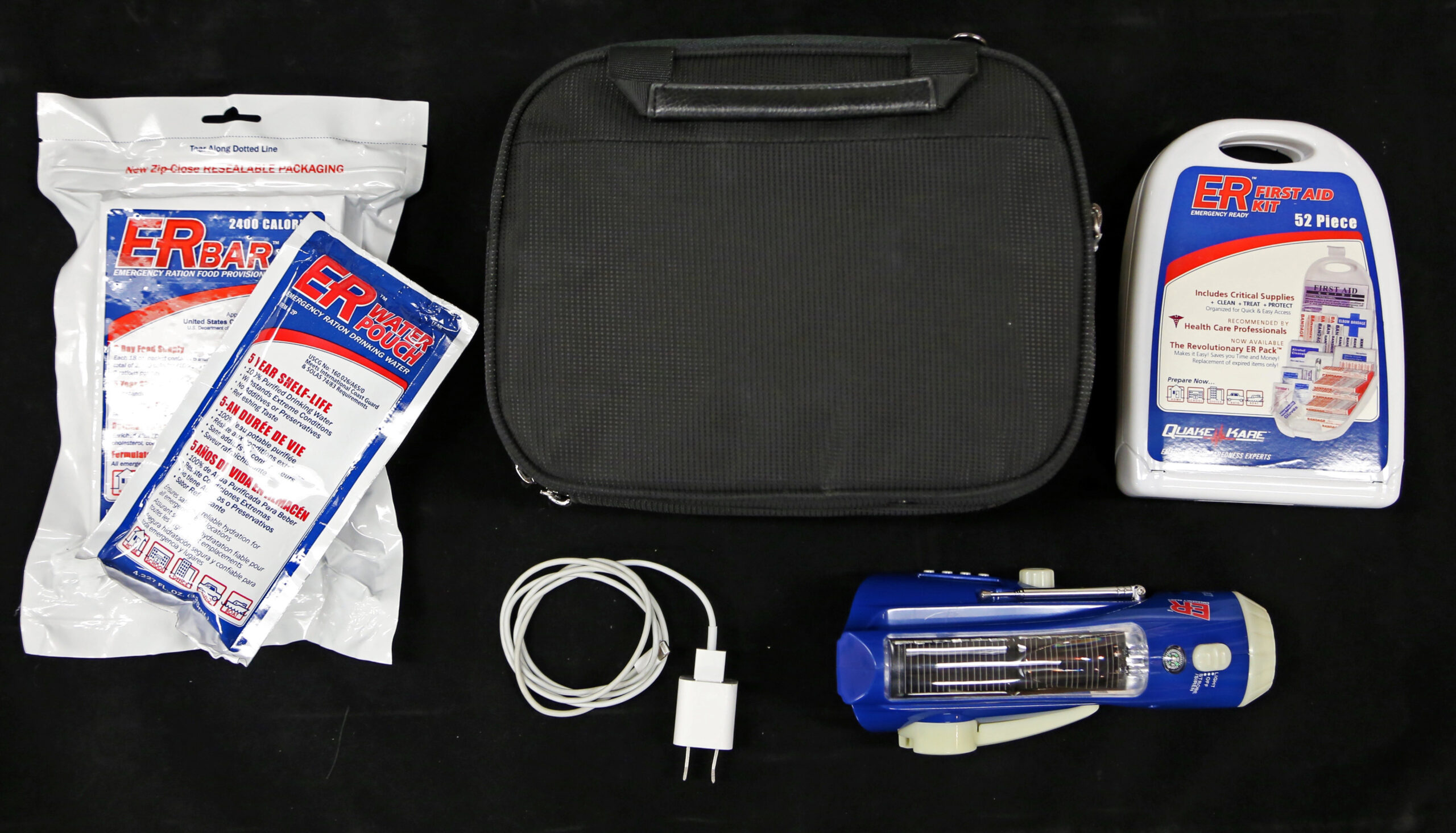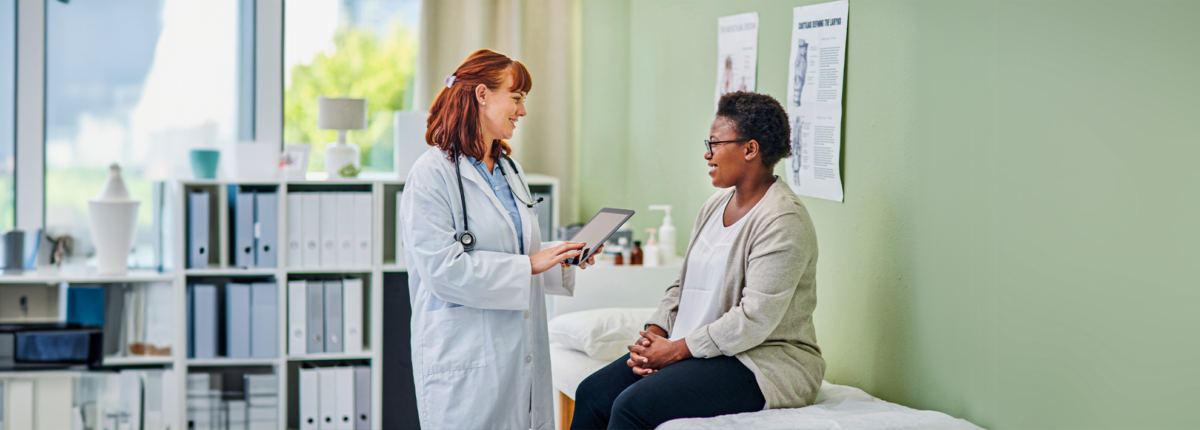A T1D’s Guide to Natural Disaster
Written by: Beyond Type 1 Editorial Team
7 minute read
December 1, 2015
Meet Breni Crabtree—an RN with specialty training in pediatrics and a mother to a type 1. She and her family survived the Katrina Hurricane and other evacuations out of New Orleans, La. “With a son with type 1, I have to consider things I didn’t consider before,” says Breni. “Before Katrina, we called hurricane evacuations, ‘hurricane vacations,’ and we would pack three days’ worth of supplies. Now, I pack for two weeks.” Breni also advised to prepare for traffic. “It’s been bumper to bumper, so you can’t turn off to get something last minute,” says Breni. “Pack extra supplies but especially fast-acting sugars, like juices, for the interstate.”
What if you run out of diabetes supplies?
- To prevent this, consider bulking up on supplies by asking your doctor to call in a larger script in advance. (It may be difficult to access supplies while on the road or due to closures.)
- For emergency supplies, contact the Red Cross at 877-500-8645. Visit here to find a location near you.
- Breni recommends that you have your prescriptions filled at a chain drugstore. “If my son’s prescription is on file at a major drugstore, then I know I can get supplies on the road,” says Breni. “We don’t use a local pharmacy because of that.”
Apart from supplies, what else do you recommend bringing?
“I always have a separate binder with my son’s medical information—downloads from his pump and information from his endocrinologist—that way if I need to know something, I can tell medical personnel.” Breni also recommends packing plenty of water and food for the journey.
Also, remember to write down emergency contact numbers in the binder in the event that your phone dies!
What else should you consider when evacuating for a natural disaster?
“When you are evacuating with someone with type 1, you should relocate to a city with a hospital. Then, if there’s a crisis and you need medical care, you can get it.
“I used to tell my kids to pack anything special they wanted to keep in a plastic container (to be left behind). We were lucky that our house flooded because of broken pumps and not the levy. I had some friends who lost everything though (in terms of property), and it was those people who said, ‘Everything is replaceable except for my family.’”
Being type 1 or a parent to a type 1 diabetes (T1D) means being prepared—not only for the day-to-day challenges, but also, and more importantly, for disaster. Whether it’s an earthquake, fire, flood, or simple power shortage, you’ll need certain supplies to ensure your safety or the safety of your loved one. When creating your T1D Emergency Kit, assemble these essentials, so when it’s go-time, there’s no stopping you.
Your Container Should Be
- Waterproof
- Insulated
- Easy-to-identify
- Easy-to-transport
Medicine and Healthcare Details
Medication
Any prescription or over-the-counter drug that’s a part of your regimen. Make sure to keep medicines in their original containers for easy identification. Include a list of all prescriptions and a copy of your health insurance details in case you need to refill them.
Medical Details
A complete list of all medications you take and when you take them. Include any medication allergies. Also, list your physician and emergency contact information.
Medical Identification
Diabetes tag or medical bracelet that indicates that you are a person with T1D.
Diabetes Essentials
Blood Glucose Meter
The go-to device for testing your blood sugar levels
Insulin
The American Diabetes Association recommends packing a three-day supply, but if you’re evacuating and don’t know when you’ll be back, pack up to two weeks’ worth of supplies. Include short-acting as well as long-acting insulin.
When insulin is kept cool at the recommended temperature of 36° F – 46° F, it will last until its expiration date. Unrefrigerated insulin can be stored at a temperature between 59°F-86°F and may be effective up to 28 days. Don’t forget to rotate supplies so that your emergency kit does not contain expired products.
A Cooler
Include four reusable ice packs to keep insulin cool. (FRIO makes insulin pouches that cool when submerged in water.) Never use insulin that has been frozen.
Syringes and/ or Pen Needles
Both deliver insulin; it depends on what’s your instrument of choice. If you are on a pump you should carry emergency needles and insulin vials, or an emergency pen in case of failure. Also, carry extra syringes for mini glucagon shots.
If You Use a Pump
Pack extra reservoirs (object that contains insulin dose) and infusion sets (tubing used to deliver insulin). Remember to pack insulin and syringes should your pump fail.
Batteries
Pack batteries and chargers for all devices. Power up!
Numbing Cream
This is to help soothe pump or continuous glucose monitor (CGM) site areas prior to insertion.
Alcohol Swabs
To clean skin surface before administering injection of insulin
Lancing Device with Lancet
Device that contains lancet (small, sharp object) to prick skin for blood sample
Containers
For disposing of used syringes, needles and lancets. An empty water bottle can do.
Test Strips
Item that collects your blood sample and then is inserted into your blood glucose meter for reading blood glucose levels.
Ketone Testing Products
This is for testing your urine for ketone, a chemical produced when there’s a shortage of insulin in your blood. The presence of ketone in the urine means the body is using body fat for energy instead of glucose because not enough insulin is available to use glucose. You can either use a ketone meter or strips.
Fast-acting Carbohydrate
For treating hypoglycemia pack hard candy, fruit juice, regular soda, glucose tablets, or gels.
Nasal glucagon / Glucagon Emergency Kit
Nasal form of Glucagon (BAQSIMI, available by prescription) or injectable form of glucagon (available by prescription) and used to treat severe hypoglycemia. (Opposite of insulin.)
Important Extras
Flashlight
When you’re without power, this is essential for navigating.
Radio
It’s old-school, but it works. Keep yourself posted on emergency warnings and instructions.
Batteries and Charger
For your meters, pumps, flashlight and radio. It’s also smart to include an extra cell phone charger.
Water and Food
Staying hydrated is essential, so pack at least a three-day supply of water. Also include a three-day supply of non-perishable food like peanut butter, cheese crackers, granola bars, or meal replacement shakes.
First-Aid Kit
You can purchase one from the American Red Cross or assemble one yourself. Make sure to include bandages, cotton swabs, dressings, scissors, saline solution and topical medications. As a person with diabetes, you are more susceptible to infection, so wound-care products are particularly important to have. It’s a good idea to also include pain and fever-reducing medicine as well as a thermometer and blanket.
Comfortable and Closed-toe Shoes
In case of evacuation, you may have to walk long distances. An injury to your feet is an easy way to contract an infection and immobilize you.
Where Your Kit Should Be
In a cool and dry place that’s easily accessible. Tell others about it, so you’re not the only one who knows. And remember; check your kit once a month so that all supplies are replenished and up-to-date. Consider using a system like Tile to keep track of your kit and be able to locate it should you lose it.
Pet Emergency Precautions
Taking care of and evacuating loved ones also includes your pets (whether they are service animals or not). Be sure to assemble Fido’s own “survival kit” before disaster strikes. Especially if you’re depending on your animal to keep you safe in high-stress situations, you’ll need your pet prepared to go on the move and integrate easily into any potential disaster shelter or situation.
Pack the following:
- Bottled water
- Non-perishable food
- Can opener
- Crate (if required)
- Food and water dishes
- Veterinary records
- Identification tags (up-to-date and visible on collar)
- Additional evacuation site tag (attach to collar and include address and phone number)
This last recommendation is in the chance that your animal is separated from you and can be relocated to your temporary safe haven.
Especially because shelters may be noisy and chaotic spaces during a natural disaster, try to socialize your animal beforehand in busy public spaces and around loud noises such as parades or fireworks.
If you have a DAD (diabetes assistance dog) for example, prepare yourself for the ignorance that surrounds service animals. Be ready to show service authentication and to explain the service your dog provides as well as the laws that permit you to have the animal in any location.
Check out the Daily Diabetes-Care Kit.

Author
Beyond Type 1 Editorial Team
Beyond Type 1 is the largest diabetes org online, funding advocacy, education and cure research. Find industry news, inspirational stories and practical help. Join the 1M+ strong community and discover what it means to #LiveBeyond a diabetes diagnosis.
Related Resources

Already compatible with Dexcom’s G6 and G7 continuous glucose monitors (CGMs), the Omnipod 5 Automated...
Read more

The younger a person is diagnosed with type 2 diabetes, especially those with obesity, the...
Read more

The Oura Ring, which tracks things like sleep, heart rate, and activity, is joining forces...
Read more



